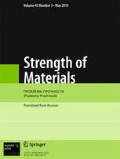A method is examined that permits the ballistic coefficient (BC) of a bullet to be converted based on universal expressions: in the Ciacci law and the air drag law of 1943, i.e., within the framework of laws that extend to the territories of the former USSR countries; to the standards G7 and G1, i.e., within the framework of standards that are the most-used worldwide; in the air drag law of 1943 and to the standard G7, i.e., bringing a BC value to the form that is used on the territories of the former USSR countries (including Ukraine) or to the most-used form worldwide (including NATO member-countries). The relation is formulated on the basis of the central design of an experiment that describes the range of values for an examined process. The above approach enables BC to be brought to an easy-to-use form on the basis of its known value in any law (or to a standard) for analysis of exterior-ballistic characteristics or computations of a bullet velocity at an arbitrary range during field tests of armored targets without bulky equipment for bullet velocity measurements. An examined process is reliably described with the approved mathematical model of bullet motion in air, as the solid body motion, based on the system of four differential equations of the first order. The adequacy of empiric expressions is verified by estimating the standard deviation of values gained with the mathematical model of bullet motion and polynomial as well as by their comparison with the accuracy of determining the ballistic coefficient (no more than 10-3 for the G7 and G1 standards and no more than 10-2 for the Ciacci and 1943 laws).
Similar content being viewed by others
References
B. Litz, Applied Ballistics for Long-Range Shooting, Applied Ballistics, LLC, Cedar Springs, MI (2011).
G. A. Danilin, V. P. Ogorodnikov, and A. B. Zavolokin, Design Principles for the Cartridges to Small Arms. Textbook [in Russian], BGTU, St.-Petersburg (2005).
A. V. Kolomiitsev, S. N. Lar’kov, and I. S. Sobakar, Handbook of Cartridges [in Russian], Oberig, Kharkov (2008).
E. E. Rafales-Lamarka and V. G. Nikolaev, Several Methods of Design and Mathematical Analysis of Experiments [in Russian], Naukova Dumka, Kiev (1971).
V. V. Burlov, V. V. Grabin, A. Yu. Kozlov, et al., Ballistics of Barrel Systems [in Russian], Mashinostroenie, Moscow (2006).
Manual of Shooting Practice [in Russian], Voenizdat, Moscow (1985).
R. L. McCoy, Modern Exterior Ballistics: The Launch and Flight Dynamics of Symmetric Projectiles, Schiffer Publishing Ltd., Atglen, PA (2012).
Author information
Authors and Affiliations
Corresponding author
Additional information
Translated from Problemy Prochnosti, No. 3, pp. 100 – 104, May – June, 2020.
Rights and permissions
About this article
Cite this article
Chepkov, I.B., Hurnovych, A.V., Lapyts’kyi, S.V. et al. Method of Conversion for the Ballistic Coefficient of Bullets. Strength Mater 52, 419–422 (2020). https://doi.org/10.1007/s11223-020-00193-8
Received:
Published:
Issue Date:
DOI: https://doi.org/10.1007/s11223-020-00193-8




